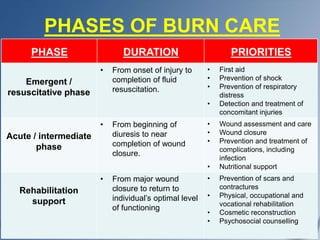A nurse working in the perioperative area is reviewing the Quality and Safety Education in Nursing (QSEN) competencies. Which of the foIIowing competencies should the nurse identify as the priority when caring for a client during the perioperative period?
Evidence based practice
Informatics
quality improvement
Safety
The Correct Answer is D
A. Evidence-based practice:
Evidence-based practice (EBP) involves integrating the best available evidence from research, clinical expertise, and patient preferences and values to inform nursing practice. In perioperative nursing, EBP is important for making informed decisions about preoperative, intraoperative, and postoperative care protocols. For example, using evidence-based guidelines for surgical site infection prevention, pain management strategies, and postoperative care protocols can improve patient outcomes and safety.
B. Informatics:
Informatics refers to the use of information technology and data management systems to support nursing practice, education, research, and patient care. In perioperative nursing, informatics plays a crucial role in managing electronic health records (EHRs), accessing patient data, documenting care, and communicating with interdisciplinary team members. It also includes utilizing perioperative information systems for surgical scheduling, anesthesia records, and tracking patient progress during surgery.
C. Quality improvement:
Quality improvement (QI) involves systematic processes to monitor, assess, and improve the quality of healthcare services. In perioperative nursing, QI initiatives focus on enhancing patient safety, optimizing surgical outcomes, reducing complications, and improving efficiency in perioperative processes. Nurses participate in QI projects by analyzing data, identifying areas for improvement, implementing evidence-based practices, and evaluating the impact of interventions on patient care and outcomes.
D. Safety:
Safety is a fundamental QSEN competency, particularly critical in perioperative nursing care. Perioperative nurses are responsible for ensuring the safety of patients during all phases of surgery, including preoperative assessment, intraoperative care, and postoperative recovery. This includes measures such as verifying patient identity and surgical site, preventing surgical errors (e.g., wrong-site surgery), maintaining aseptic techniques to prevent infections, preventing falls and injuries, managing anesthesia safely, and adhering to protocols for safe medication administration and equipment use.
Nursing Test Bank
Naxlex Comprehensive Predictor Exams
Related Questions
Correct Answer is D
Explanation
A. Provide a heart-healthy low-potassium diet:
While a heart-healthy low-potassium diet is essential for managing chronic hyperkalemia and preventing future occurrences, it is not the first intervention to implement in a patient with a serum potassium level of 7.5 mEq/L and exhibiting cardiovascular changes. The effects of dietary changes on serum potassium levels are gradual and may take days to have a significant impact. In an acute situation like this, immediate interventions are needed to rapidly lower potassium levels and address the associated cardiovascular risks.
B. Prepare to administer sodium polystyrene sulfate 15g by mouth:
Sodium polystyrene sulfate is a medication used to exchange sodium for potassium in the gastrointestinal tract, effectively lowering serum potassium levels over hours to days. While it is a valid treatment for hyperkalemia, its onset of action is not immediate enough to address the urgent cardiovascular changes seen in severe hyperkalemia. Therefore, it is not the first-line intervention in this scenario.
C. Prepare the patient for hemodialysis treatment:
Hemodialysis is an effective method for rapidly lowering serum potassium levels in cases of severe hyperkalemia. However, it is a more invasive and time-consuming procedure that requires preparation, including vascular access and dialysis setup. It is typically reserved for situations where other interventions have failed or in patients with severe or refractory hyperkalemia. In the context of this scenario, where the patient has a serum potassium level of 7.5 mEq/L and is exhibiting cardiovascular changes, hemodialysis may be considered if initial interventions are not successful, but it is not the first action to implement.
Correct Answer is D
Explanation
A. Cardiac arrest related to septic shock:
Septic shock can occur in burn patients due to the breakdown of the skin barrier, which allows pathogens to enter the bloodstream and cause systemic infection. However, while septic shock is a serious complication of burn injuries, it is not the primary cause of death in the emergent phase. Septic shock can lead to multiple organ failure and contribute to mortality, but it is often a later complication rather than an immediate cause in the emergent phase.
B. Infection:
Infections are a significant concern in burn patients, especially as the burn wound provides an ideal environment for bacterial growth. However, infections typically contribute more significantly to mortality in the later phases of burn care rather than in the emergent phase. In the emergent phase, hypovolemic shock and other immediate complications have a greater impact on mortality.
C. Adrenal failure:
Adrenal failure, specifically acute adrenal insufficiency or Addisonian crisis, can occur in burn patients due to the stress response and corticosteroid depletion. While adrenal insufficiency is a concern in severe burn cases, it is not the primary cause of death in the emergent phase requiring referral to a burn center.
D. Hypovolemic shock and renal failure:
Hypovolemic shock is a critical concern in the emergent phase of burn trauma because burns can lead to significant fluid loss and electrolyte imbalances. Hypovolemic shock results from insufficient circulating blood volume, leading to inadequate perfusion of organs and tissues, which can be life-threatening. Additionally, renal failure can develop due to hypovolemia, decreased cardiac output, and the release of inflammatory mediators, leading to acute kidney injury (AKI). Hypovolemic shock and subsequent renal failure are major contributors to mortality in the emergent phase of burn trauma, necessitating prompt referral to a burn center for specialized care.

Whether you are a student looking to ace your exams or a practicing nurse seeking to enhance your expertise , our nursing education contents will empower you with the confidence and competence to make a difference in the lives of patients and become a respected leader in the healthcare field.
Visit Naxlex, invest in your future and unlock endless possibilities with our unparalleled nursing education contents today
Report Wrong Answer on the Current Question
Do you disagree with the answer? If yes, what is your expected answer? Explain.
Kindly be descriptive with the issue you are facing.
